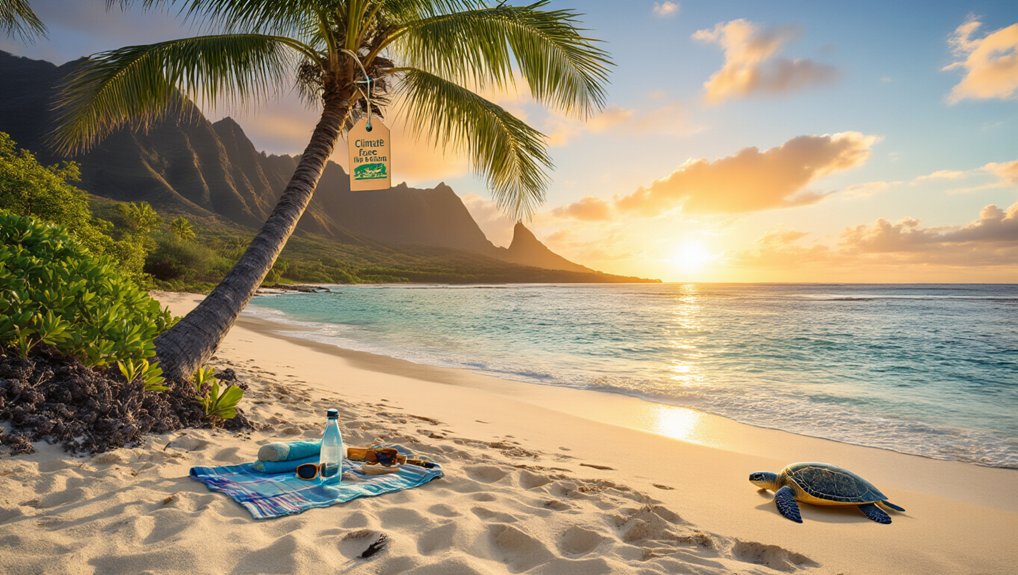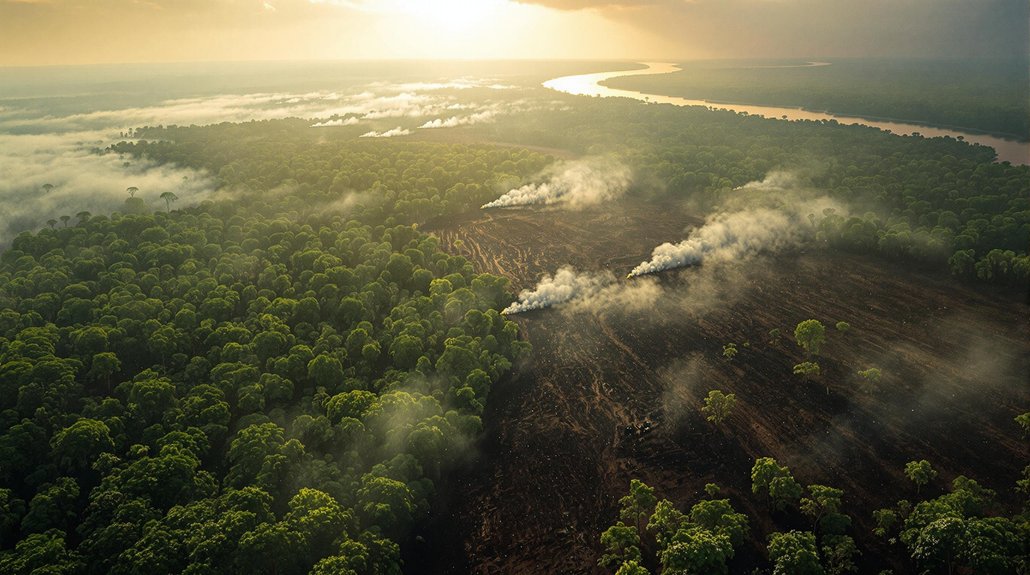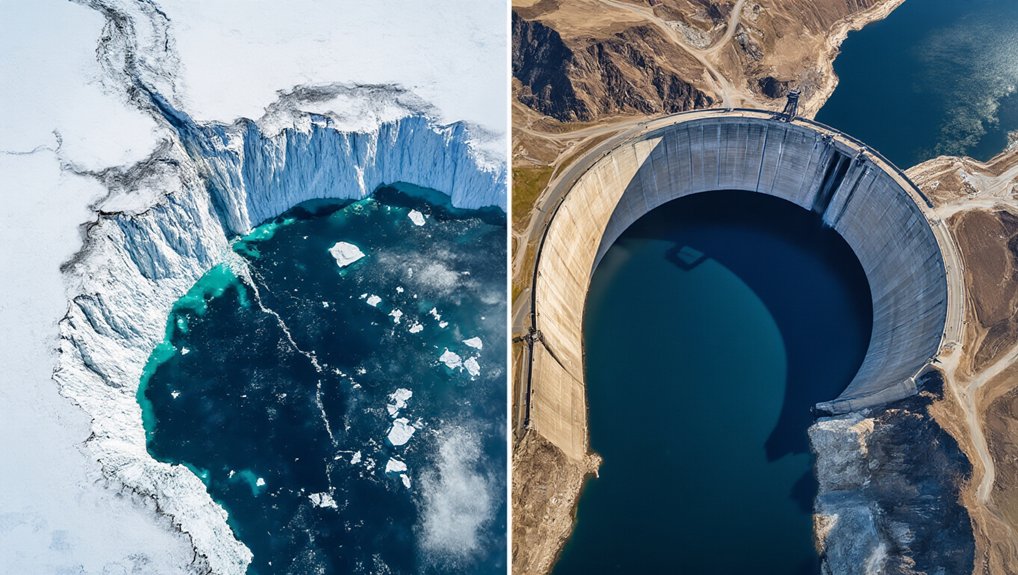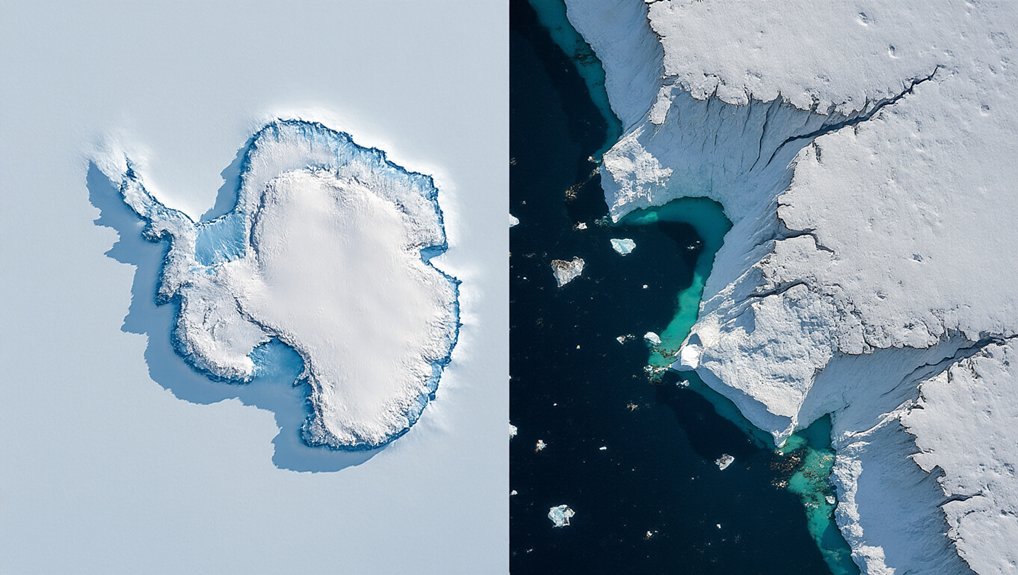While tourists flock to Hawaii’s pristine beaches and volcanic scenery, they’ll now pay a bit more for the privilege. The state just became the first in America to slap a climate fee on visitors, adding 0.75% to the existing lodging tax. That brings the total to 11% – already among the highest in the country.
Here’s what it means: a $300 hotel room now costs an extra $2.25 per night. Not exactly breaking the bank, but it adds up. The fee hits hotels, short-term rentals, and even cruise ship passengers. No escape.
Governor Josh Green signed Act 96 after years of legislative haggling. Environmental groups pushed hard for this. They argued that nearly 10 million tourists annually trash the beaches, damage coral reefs, and strain natural parks. Fair point. The state needed money to fix the mess.
Nearly 10 million tourists annually trash beaches, damage coral reefs, and strain Hawaii’s natural parks.
The projected haul? About $100 million a year. That cash goes straight to climate projects, beach restoration, and protecting endangered species. The revenue will also fund green jobs initiatives and training programs for local youth. Some lawmakers wanted a flat $25 per visitor instead – would’ve raised $68 million. But they settled on the percentage model.
Hawaii’s playing catch-up with the rest of the world. New Zealand just tripled their visitor fee to $62. Popular destinations everywhere are making tourists pay for environmental damage. It’s the new normal.
The timing isn’t random. Those devastating Maui wildfires killed 115 people and wiped out Lahaina. Climate disasters are getting worse. Infrastructure needs hardening. Ecosystems need restoration. Someone has to pay. With fossil fuels accounting for 75% of emissions, Hawaii’s new fee represents a local solution to a global problem. The state faces an annual conservation funding gap of between $560 million and $1.69 billion.
Travel industry folks aren’t thrilled. They worry higher costs will scare off visitors. But honestly? Hawaii’s still Hawaii. People will come.
This fee links tourism directly to environmental protection. Visitors finally contribute to maintaining the natural resources they consume. It’s a test case other states will watch closely. If Hawaii can pull this off without tanking tourism, expect copycats.
The message is clear: paradise isn’t free anymore. Want to enjoy those perfect beaches and volcanic wonders? Help pay for their upkeep. Seems reasonable enough.
References
- https://www.travelandtourworld.com/news/article/hawaii-leads-the-way-with-first-ever-green-fee-to-fund-climate-action-what-travelers-need-to-know-in-2025/
- https://governor.hawaii.gov/newsroom/office-of-the-governor-news-release-gov-green-signs-historic-senate-bill-1396-codifying-a-green-fee-to-mitigate-climate-impacts-in-hawaii/
- https://www.civilbeat.org/2025/05/hawaii-becomes-first-state-to-charge-tourists-to-protect-the-environment/
- https://travelnoire.com/hawaii-climate-impact-fee
- https://beatofhawaii.com/hawaii-visitor-fee-faces-2025-comeback-whats-next/









